| Listing 1 - 10 of 15 | << page >> |
Sort by
|
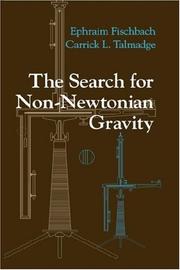
ISBN: 0387984909 Year: 1999 Publisher: New York (N.Y.) : Springer,
Abstract | Keywords | Export | Availability | Bookmark
 Loading...
Loading...Choose an application
- Reference Manager
- EndNote
- RefWorks (Direct export to RefWorks)
Book
ISBN: 3769695488 Year: 1999 Publisher: München : Bayerische Akademie der Wissenschaften,
Abstract | Keywords | Export | Availability | Bookmark
 Loading...
Loading...Choose an application
- Reference Manager
- EndNote
- RefWorks (Direct export to RefWorks)
Book
Year: 1999 Publisher: Bruxelles : Institut d'aéronomie spatiale de Belgique = Belgisch instituut van ruimte-aeronomie,
Abstract | Keywords | Export | Availability | Bookmark
 Loading...
Loading...Choose an application
- Reference Manager
- EndNote
- RefWorks (Direct export to RefWorks)
Espace extra-atmospherique --- Gravitation --- Plasma (physique)
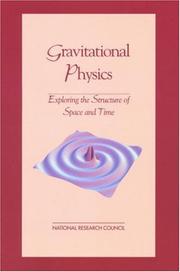
ISBN: 0309066352 030951455X 9780309514552 9780309066358 0309083745 9780309083744 0309172675 Year: 1999 Publisher: Washington, DC : National Academy Press,
Abstract | Keywords | Export | Availability | Bookmark
 Loading...
Loading...Choose an application
- Reference Manager
- EndNote
- RefWorks (Direct export to RefWorks)
Cosmology --- Gravitation. --- General relativity (Physics) --- Relativistic theory of gravitation --- Relativity theory, General --- Field theory (Physics) --- Matter --- Physics --- Antigravity --- Centrifugal force --- Relativity (Physics) --- Gravitation --- Properties
Book
Year: 1999 Publisher: Liège : Université de Liège, Faculté des sciences (ULg),
Abstract | Keywords | Export | Availability | Bookmark
 Loading...
Loading...Choose an application
- Reference Manager
- EndNote
- RefWorks (Direct export to RefWorks)
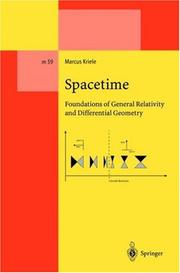
ISBN: 3540663770 3540483543 9783540663775 Year: 1999 Volume: 59 Publisher: New York (N.Y.): Springer,
Abstract | Keywords | Export | Availability | Bookmark
 Loading...
Loading...Choose an application
- Reference Manager
- EndNote
- RefWorks (Direct export to RefWorks)
This textbook is for mathematicians and mathematical physicists and is mainly concerned with the physical justification of both the mathematical framework and the foundations of the theory of general relativity. Previous knowledge of the relevant physics is not assumed. This book is also suitable as an introduction to pseudo-Riemannian geometry with emphasis on geometrical concepts. A significant part of the text is devoted to the discussion of causality and singularity theorems. The insights obtained are applied to black hole astrophysics, thereby making the connection to current active research in mathematical physics and cosmology.
Geometry, Differential --- Space and time --- General relativity (Physics) --- General relativity (Physics). --- Geometry, Differential. --- Space and time. --- Theory of relativity. Unified field theory --- Differential geometry. Global analysis --- Astrophysics. --- Gravitation. --- Astronomy. --- Physics. --- Differential geometry. --- Astrophysics and Astroparticles. --- Classical and Quantum Gravitation, Relativity Theory. --- Astronomy, Astrophysics and Cosmology. --- Mathematical Methods in Physics. --- Differential Geometry. --- Differential geometry --- Natural philosophy --- Philosophy, Natural --- Physical sciences --- Dynamics --- Field theory (Physics) --- Matter --- Physics --- Antigravity --- Centrifugal force --- Relativity (Physics) --- Astronomical physics --- Astronomy --- Cosmic physics --- Properties --- Data processing. --- Relativistic theory of gravitation --- Relativity theory, General --- Gravitation --- Space of more than three dimensions --- Space-time --- Space-time continuum --- Space-times --- Spacetime --- Time and space --- Fourth dimension --- Infinite --- Metaphysics --- Philosophy --- Space sciences --- Time --- Beginning --- Hyperspace
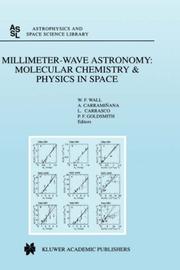
ISBN: 0792355814 9401059837 9401147140 Year: 1999 Volume: 241 Publisher: Dordrecht ; Boston ; London Kluwer Academic
Abstract | Keywords | Export | Availability | Bookmark
 Loading...
Loading...Choose an application
- Reference Manager
- EndNote
- RefWorks (Direct export to RefWorks)
Galaxies --- Millimeter waves --- Congresses --- Millimeter astronomy --- Cosmochemistry --- Astrophysics --- Molecular clouds --- Astrophysics. --- Observations, Astronomical. --- Astronomy—Observations. --- Gravitation. --- Astrophysics and Astroparticles. --- Astronomy, Observations and Techniques. --- Classical and Quantum Gravitation, Relativity Theory. --- Field theory (Physics) --- Matter --- Physics --- Antigravity --- Centrifugal force --- Relativity (Physics) --- Astronomical observations --- Observations, Astronomical --- Astronomical physics --- Astronomy --- Cosmic physics --- Properties --- Millimeter-wave radio astronomy --- Millimetre astronomy --- Radio astronomy
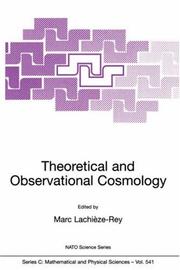
ISBN: 0792359461 0792359453 9401144559 Year: 1999
Abstract | Keywords | Export | Availability | Bookmark
 Loading...
Loading...Choose an application
- Reference Manager
- EndNote
- RefWorks (Direct export to RefWorks)
A complete account of the fundamental techniques of general relativity and their application to cosmology. The book includes reviews of the different cosmological models and their classification, including such topics as causality and horizons, the cosmological parameters, observational tests and constraints of cosmology, symmetries and the large scale topology of space and space-time, and the use of supernovas as cosmological indicators. The perturbations to the cosmological models are discussed throughout the volume. The cosmic microwave background is presented, with an emphasis in secondary distortions in relation to cosmological models and large scale structures. Recent results on dark matter are summarised. A general review of primordial nucleosynthesis is given. Gravitational lensing is discussed in great detail. Most contributions show a balance between theory and observation. Readership: A solid background for students and researchers intending to work in the field of theoretical and observational cosmology.
Cosmology --- Congresses --- Cosmologie. --- Cosmology. --- Gravitation. --- Astrophysics. --- Observations, Astronomical. --- Astronomy—Observations. --- Mathematical physics. --- Classical and Quantum Gravitation, Relativity Theory. --- Astrophysics and Astroparticles. --- Astronomy, Observations and Techniques. --- Theoretical, Mathematical and Computational Physics. --- Physical mathematics --- Physics --- Astronomical observations --- Observations, Astronomical --- Astronomical physics --- Astronomy --- Cosmic physics --- Field theory (Physics) --- Matter --- Antigravity --- Centrifugal force --- Relativity (Physics) --- Deism --- Metaphysics --- Mathematics --- Properties
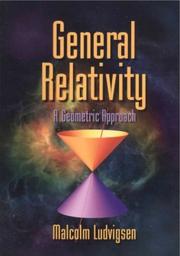
ISBN: 110711540X 1280420200 9786610420209 0511172494 0511040067 0511151888 0511302053 0511755775 0511050887 9780511040061 0511035640 9780511035647 9780511151880 9780511050886 6610420203 9780521630191 0521630193 9780521639767 052163976X 0521630193 052163976X 9781280420207 9780511172496 9780511302053 9780511755774 9781107115408 Year: 1999 Publisher: Cambridge Cambridge University Press
Abstract | Keywords | Export | Availability | Bookmark
 Loading...
Loading...Choose an application
- Reference Manager
- EndNote
- RefWorks (Direct export to RefWorks)
Starting with the idea of an event and finishing with a description of the standard big-bang model of the Universe, this textbook provides a clear, concise and up-to-date introduction to the theory of general relativity, suitable for final-year undergraduate mathematics or physics students. Throughout, the emphasis is on the geometric structure of spacetime, rather than the traditional coordinate-dependent approach. Topics covered include flat spacetime (special relativity), Maxwell fields, the energy-momentum tensor, spacetime curvature and gravity, Schwarzschild and Kerr spacetimes, black holes and singularities, and cosmology. All physical assumptions are clearly spelled out and the necessary mathematics is developed along with the physics. Exercises are provided at the end of each chapter and key ideas are illustrated with worked examples. Solutions and hints to selected problems are provided at the end of the book. This textbook will enable the student to develop a sound understanding of the theory of general relativity.
General relativity (Physics) --- Space and time. --- Geometrodynamics. --- Geometry --- Relativity (Physics) --- Space of more than three dimensions --- Space-time --- Space-time continuum --- Space-times --- Spacetime --- Time and space --- Fourth dimension --- Infinite --- Metaphysics --- Philosophy --- Space sciences --- Time --- Beginning --- Hyperspace --- Relativistic theory of gravitation --- Relativity theory, General --- Gravitation --- Physics

ISBN: 0792357299 0792357302 9401146896 Year: 1999 Volume: 534
Abstract | Keywords | Export | Availability | Bookmark
 Loading...
Loading...Choose an application
- Reference Manager
- EndNote
- RefWorks (Direct export to RefWorks)
The Proceedings of the tenth Advanced Study Institute (ASI) on Tech niques and Concepts of High Energy Physics are dedicated to Jane and Bob Wilson. Jane joined Bob at St. Croix for the first session of this Institute, after Bob had stepped down as director of Fermilab, and was scheming to build a modest charm factory in the parking lot of Columbia University's Nevis Laboratory. Through the years, Bob has been a great friend of the School, and much of its success and flavor can be attributed to his guidance and support. The 1998 meeting was held once again at the Hotel on the Cay, and, as before, the work and the fun went on very enjoyably. We had a to tal of 76 participants from 23 countries, with the main financial support for the meeting provided by the Scientific Affairs Division of the North Atlantic Treaty Organization (NATO). The ASI was co-sponsored by the U. S. Department of Energy, by the Fermi National Accelerator Laboratory (Fermilab), by the U.S. National Science Foundation, and by the University of Rochester. As in the case of the previous ASIs, the scientific program was designed for advanced graduate students and recent PhD recipients in experimental particle physics. The present volume of lectures should complement and update the material published (by Plenum) for the first nine ASIs and prove to be of value to a wider audience of physicists.
Physics --- Physical Sciences & Mathematics --- Electricity & Magnetism --- Nuclear Physics --- Particles (Nuclear physics) --- Technique --- Congresses --- Nuclear physics. --- Heavy ions. --- Observations, Astronomical. --- Astronomy—Observations. --- Electrical engineering. --- Gravitation. --- Particle and Nuclear Physics. --- Nuclear Physics, Heavy Ions, Hadrons. --- Astronomy, Observations and Techniques. --- Electrical Engineering. --- Classical and Quantum Gravitation, Relativity Theory. --- Field theory (Physics) --- Matter --- Antigravity --- Centrifugal force --- Relativity (Physics) --- Electric engineering --- Engineering --- Astronomical observations --- Observations, Astronomical --- Ions --- Atomic nuclei --- Atoms, Nuclei of --- Nucleus of the atom --- Properties
| Listing 1 - 10 of 15 | << page >> |
Sort by
|

 Search
Search Feedback
Feedback About UniCat
About UniCat  Help
Help News
News